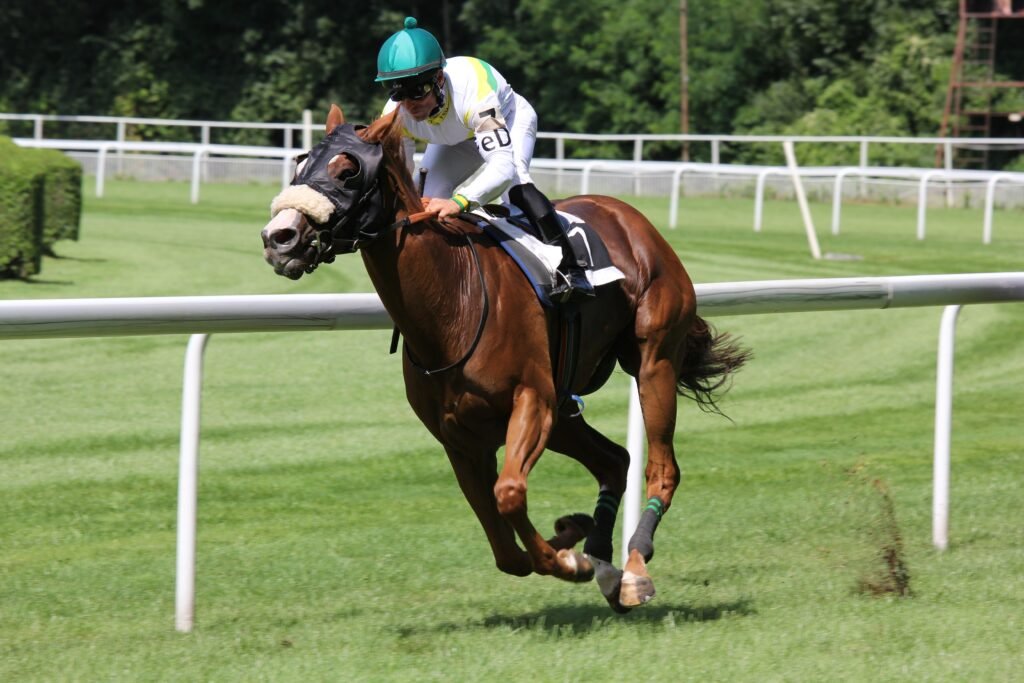
For most people who love the races there is one thing always on their minds… weather. Sure for the most part it stems from a concern of ‘what should I wear?’, but it goes deeper than this.
Weather conditions do impact horse racing, because not every horse is a legend in the same conditions.
Some horses are great with boggy, muddy tracks, whereas others struggle. Some horses are great on a dry arid track, and others cannot stand it.
You could pick and bet on the best horse possible out of the 2022 contenders for the Belmont Stakes, but if the weather suddenly turns, you may well have bet on the wrong horse for the job.
So, let’s go over the impact of weather in horse racing, how and why it affects it and what you can be more vigilant about as you start looking into the races!
Weather In Horse Racing: Weather & The Going
Of all the many sports played around the world, horse racing is probably the one sport most affected by weather changes. It does and can affect the jockeys who take part, but it affects the horses even more.
Weather will affect the track which the horses will be racing on, even if the track is a titled, all-weather track. Although all-weather tracks are more hardy than turf tracks and dirt tracks.
So, when you have your race cards in hand, and you are picking out your selections, you should also look at the weather forecast and consider the ground conditions as well. The last thing you want to do is bet on a horse who doesn’t run well in the weather conditions of the day.
Turf Races & All-Weather Races
Turf races are races that take place on grass, however, all-weather racecourses are done on a more robust surface. This surface is usually a mixture of sand, wax, and rubber, which is known as Tapeta. However, sometimes the surface is just sand.
In areas of Europe, a majority of racing will be done on turf, and this is extremely susceptible to change by weather conditions, alternatively all-weather turf will not often have issues for the horses, unless the conditions are extreme.
Obviously, it is safe to say that rain will have an effect on horse racing, it decides the going at a racecourse. If there is too little of it, then the turf gets hard which means there is less give beneath the horses’ hooves. The track may be described as being either good or firm.
Some horses do better on turf that is hard, these will often be the horses that run in the summer months when the turf is likely hardest and rainfall less.
However, there will sometimes be heavy rains and the turf becomes much softer, and then the course is described as being good, soft, or heavy.
Tracks with heavy rainfall will be commonplace in the winter months, although it can happen throughout the year as well.
All-weather surfaces are advantageous, as it means that races can go ahead even during frosts and heavy rains. Standard turf would not bode so well in these conditions, and races can even be canceled due to weather.
All-weather surfaces are not good for all-weather though, you can’t race in thick fog, or a blanket of snow.
A good 5-8 days of racing per year are lost due to frosts and snows, but there is not much to be done about this.
The Going As An Advantage
The going is something you need to be paying attention to when looking at odds. You should always be aware of how to notice when a horse has performed well under particular conditions, if the going is fast, slow, soft, quick, etc.
Whatever selection you pick you should match up the going on the day to the horse’s previous experiences. If a horse regularly does well under rainy conditions, and it is raining on the day, that is a good horse to pick.
Does Wind Affect The Going?
There is one thing we haven’t mentioned yet, because it does not directly affect the going. However, wind can affect the times of races. Wind can do a lot, actually. You see, while wind cannot cancel a race, unless it is a storm, or hurricane, it has other features.
If there has been heavy rainfall on the track, and then there are a lot of high winds after this, wind can actually dry out a track quickly, especially when accompanied by sunlight.
It can make it harder for horses compared to the rest.
If there is a tailwind behind them, horses will often run with greater speed, and you can find track records being broken with record speeds. So, it is wise to consider the wind as well.
Leading up to any race, you should be tracking the weather as well, and how it will affect the horses on the track.
However, you should be wise to note that winds can do the opposite as well. If there is a headwind going into the horses, it can slow them down, which has a greater effect on the front-runners who are taking the brunt of the wind.
Those behind will get some shelter from the runners, and those behind them will be able to keep aside some energy for a big push at the finish. With high winds, those at the front are usually at a disadvantage.
Consistency Is Fallible
It is always worth remembering that the track does have a part to play in how the horses perform, and that the conditions of the track will not remain the same throughout an entire race day.
Weather is fallible, it is very changeable, and you never know what will happen next. It does depend on where the track is as some places do have more reliable weather than others, but anything can change.
Hindsight is a pain, but experience teaches you a lot with weather and racing.



